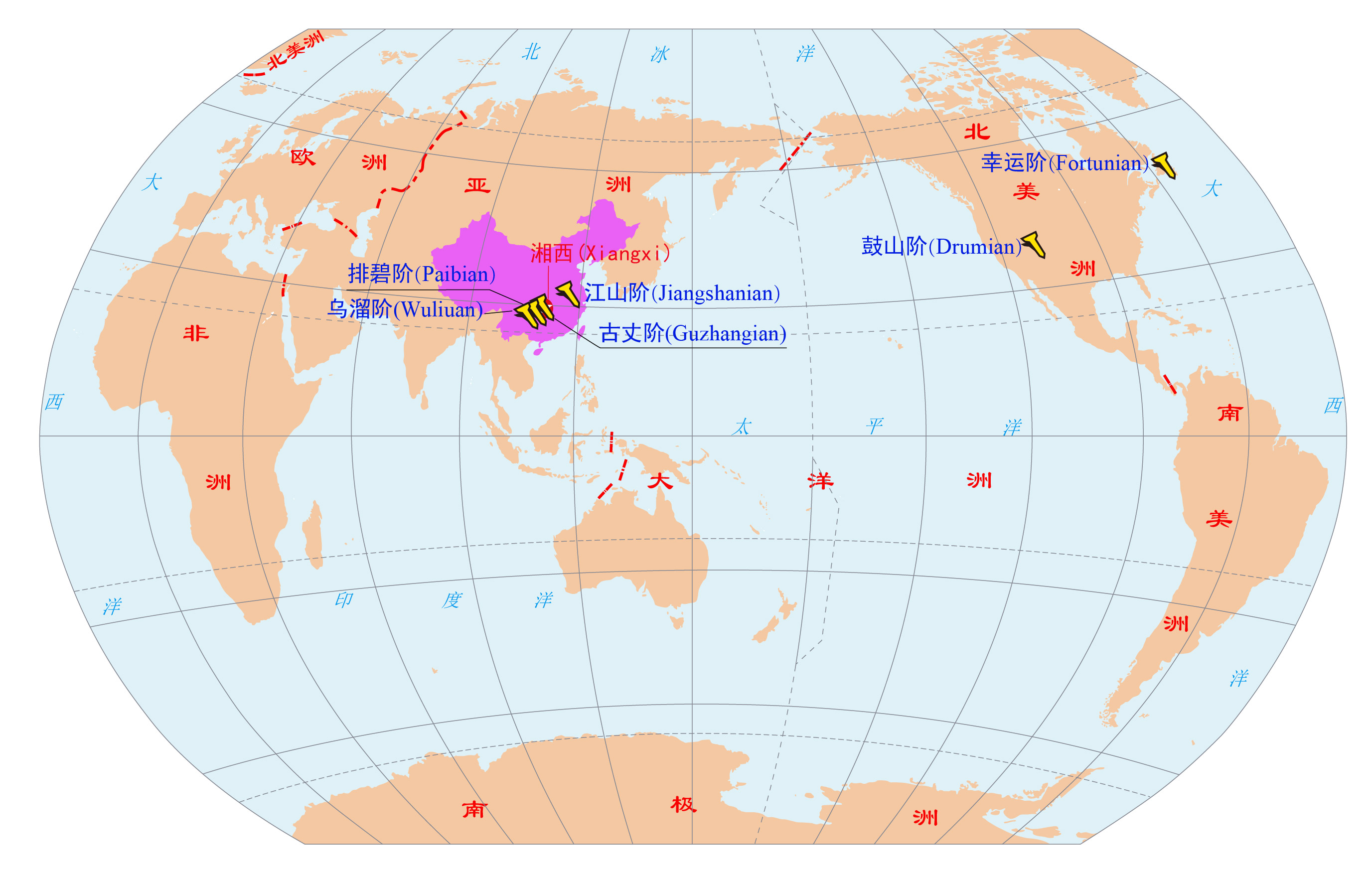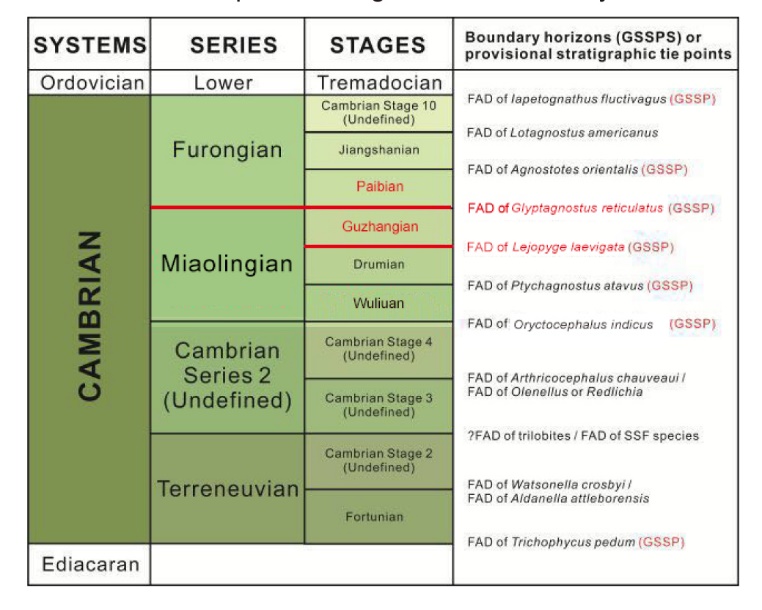GSSPs in the Cambrian System
According to the latest classification criteria of the Cambrian chronostratigraphy by ICS, the global Cambrian chronostratigraphy is generally divided into four series and 10 stages, which are used to reflect the various stages of life development in Cambrian period, while the important biological events or species with significance of global contrast are applied to define boundaries of the stages. At present, six GSSPs have been established in the Cambrian system, i.e., Fortunian Stage with Treptichnus pedum as the point of first appearance; Wuliuan Stage (the fifth stage) with Oryctocephalus indicus as the point of first appearance; Drumian Stage (the sixth stage) with Ptychagnostus atavus as the point of first appearance; Guzhangian Stage (the seventh stage) with Lejopyge laevigata as the point of first appearance; Paibian Stage (the eighth stage) with Glyptagnostus reticulates as the point of first appearance; and Jiangshanian Stage (the ninth stage) with Agnostotes orientalis as the point of first appearance. They are used as global standards to divide Stages 1 (lower boundary of Paleozoic erathem and lower boundary of the Cambrian system) , 5, 6, 7, 9 and 9 in Cambrian system.
Among them, the two GSSPs in Paibian Stage and Guzhangian Stage are located in Xiangxi UNESCO Global Geopark.


QR Code



